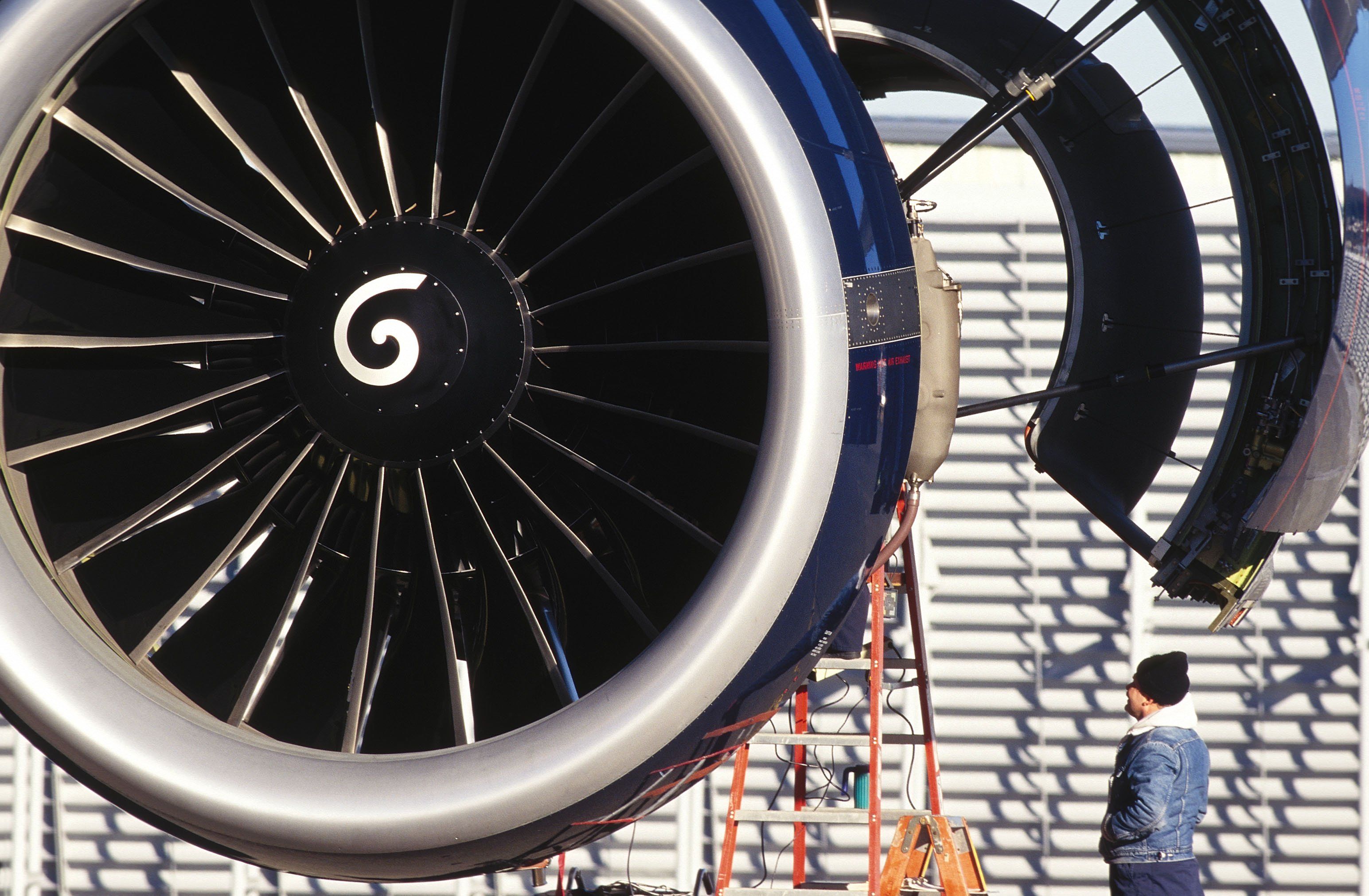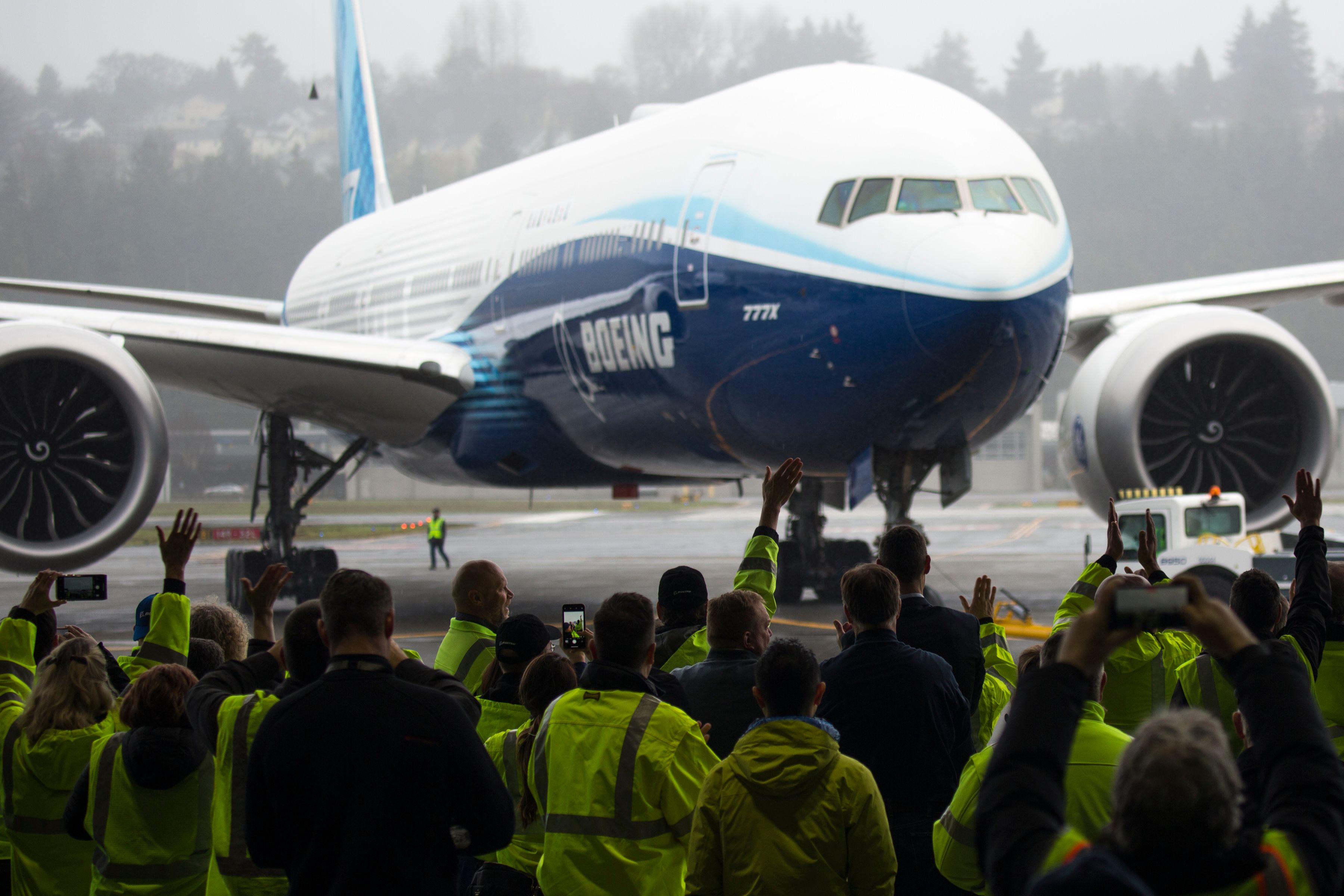With over 100 million flight hours and 32 years of program history, the General Electric GE90 is a true veteran in global commercial aviation. Despite being a market mainstay, there were significant teething problems for the engine.
The right team
Now legends in the business, GE strongholds, including Mike Benzakein, Corbett Caudill, and David Joyce, were all part of the early 1990s GE90 technical team. Notably, GE Aviation Propulsion Hall of Famer Russ Sparks managed the engine's development between 1992 and 1997. He concedes that following the GE90's launch in 1990, it was met with years of technical and financial issues during an overwhelming recession across the industry.
GE shares the following about the challenges of the period:
“The issue was most definitely not an incompetent team. But the GE90 design was revolutionary. For starters, it was GE’s first commercial engine not derived from a military engine. Its massive front fan featured carbon fiber composite blades, the new compressor produced record efficiency, and the combustor was radically different. The engine’s creator, GE legend Brian Rowe, explained the philosophy: The slow-turning front fan created enormous thrust and low noise while the fast-turning compressor provided fuel efficiency and lower emissions. In other words, the engine core worked hard so the fan didn’t have to.”
Sparks formed an approach that saw engineering leaders Caudill and Benzakein centralizing technical teams on fixing engine problems while he himself directed the wider project. He would become the program’s face when speaking with the company’s management, Boeing, and launch customer British Airways while being the one communicating with carrier executives all across the globe.
Facing the music
A tough test came in May 1995, a few months before the GE90 was to be introduced commercially. Sparks traveled across the pond to speak with the launch customer about the program woes.
He recalled:
“I went to London to update British Airways, the best launch customer you could have. I said we had a bad fan blade test, the flight test program was grounded, we had a compressor stall, and we couldn’t figure out why we were losing EGT (exhaust gas temperature) margin. My worse set of PowerPoint charts ever. It was the best thing I ever did.”
In June of that year, GE publicly shared that it had encountered an issue in the final development of the GE90 during a bird-ingestion test and that the company is in the process of a redesign. Still, they expressed that they were working with Boeing to meet the schedule for September 1995 delivery.
It would be November 17th, 1995, when the GE90 entered service with British Airways on a flight from London Heathrow to Dubai. However, the program would remain in the spotlight. Early operations were impacted by gearbox bearing wear worries that forced British Airways to temporarily cut its 777 fleet from transatlantic flight in 1997.
Altogether, development and testing issues meant that the Federal Aviation Administration (FAA) had to delay certification. Moreover, the engine’s boosted thrust was not yet needed by carriers, and it was the heaviest option that was available. Rolls-Royce’s offering was the preference, and British Airways soon dropped the GE90 in favor of the British firm’s product on their 777s.
Stay informed: Sign up for our daily and weekly aviation news digests.
Overcoming the hurdles
Nonetheless, GE would have another bite of the cherry. It received the award of being the sole engine supplier of the higher-thrust 777-200LR, -300ER, and 777F aircraft. Thus, the advanced GE90 model was introduced with Air France in May 2004. The higher thrust GE90-110B1 and -115Bs have been acclaimed for their efficiency, boosting 777 sales with the type's second generation variants.
Approximately 2,800 GE90s have now been produced since 1993. It has also given way to modern innovations in the form of the GEnx, GP7000, and the 777X's GE9X. It has undoubtedly left a legacy across the aviation spectrum.
What are your thoughts about the growing pains of the GE90 program? What do you make of the overall history of the engine? Let us know what you think of the product and its operations in the comment section.
Source: New York Times


